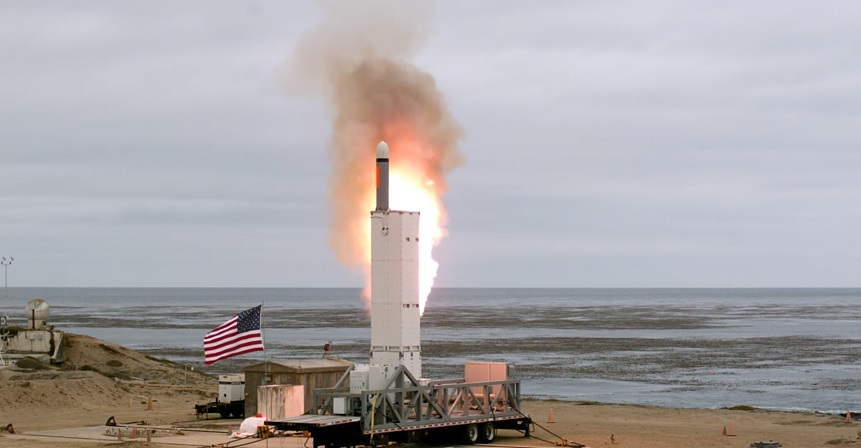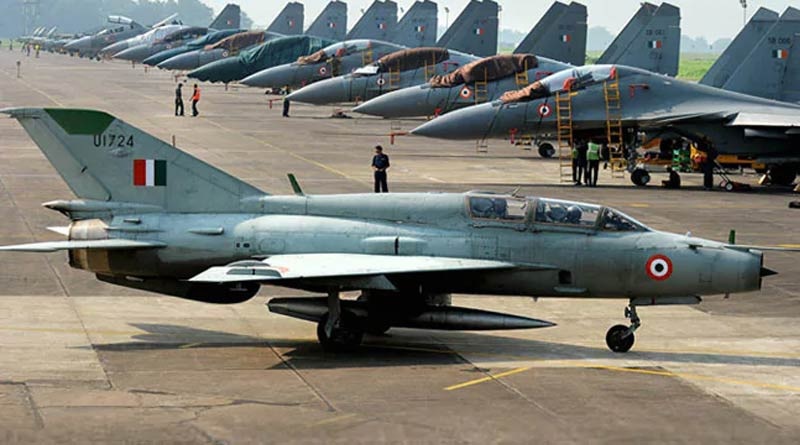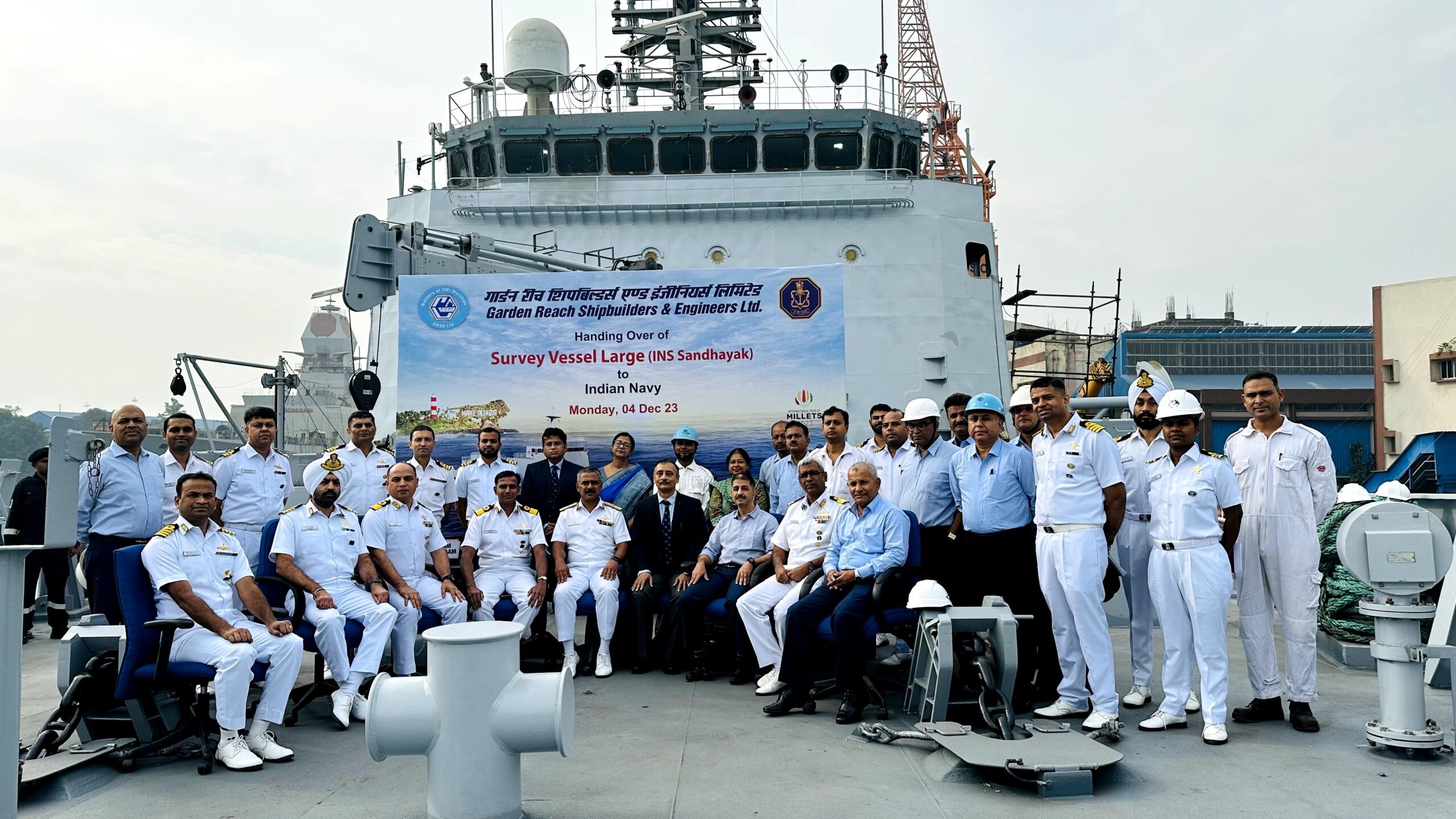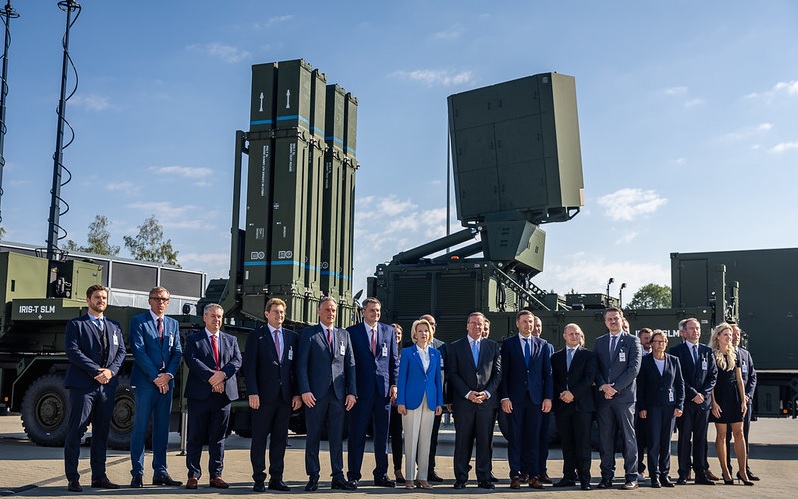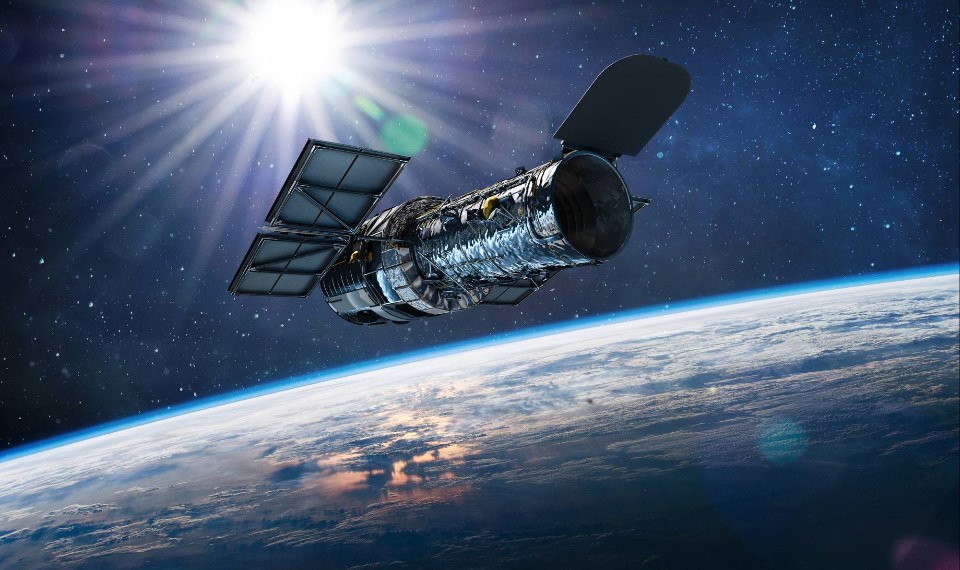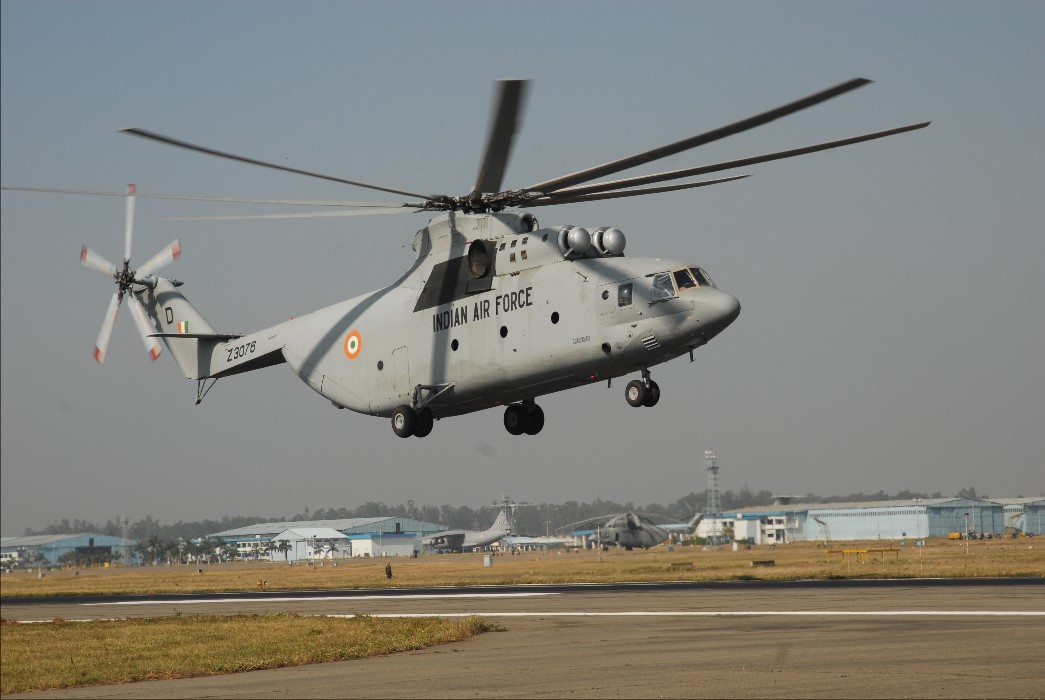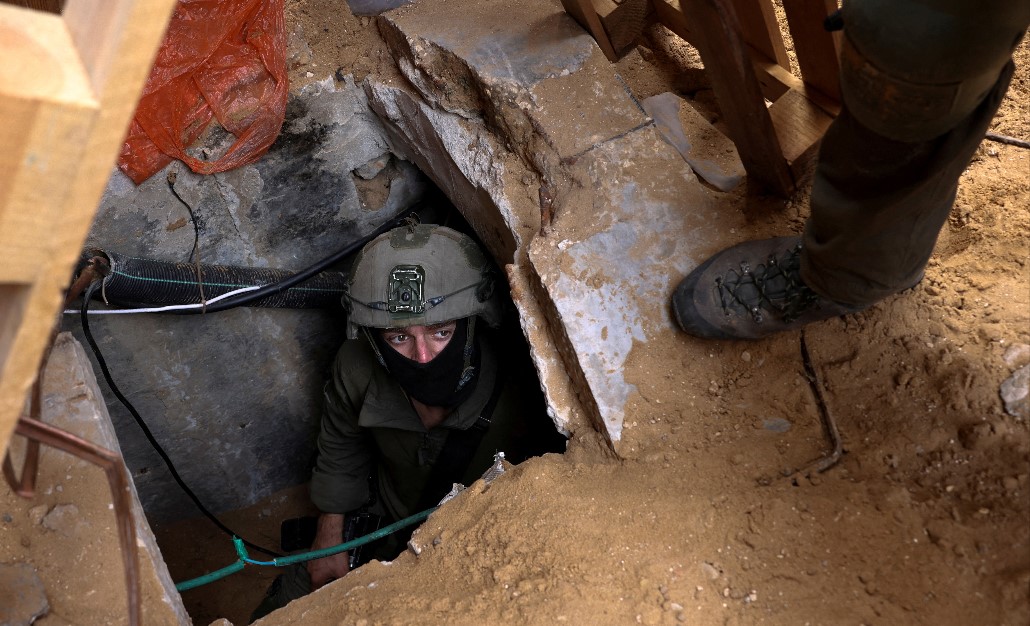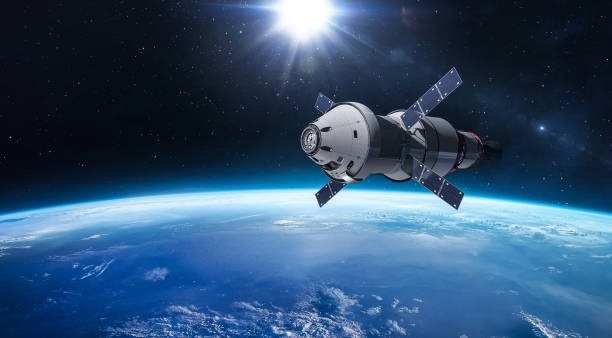World
Hamas reportedly administered a tranquilizer, identified as Clonazepam by Health Ministry official Hagar Mizrahi, to Israeli hostages before their release, aiming to create an appearance of happiness. Speaking before the Knesset Health Committee, Mizrahi disclosed that the drug, commonly used for seizure and panic disorders, was given to the captives before they were handed over to the Red Cross.Clonazepam, also known as Klonopin or Rivotril in some places, is typically taken orally and has a calming effect on the nervous system. Side effects include drowsiness, dizziness, impaired coordination, and fatigue. Prolonged use or misuse of the medication can result in dependency, tolerance, and withdrawal symptoms.Mizrahi did not specify whether the information was based on blood tests, testimonies from the hostages, or a combination of both. Committee chairman MK Yoni Meshariki has urged the Health Ministry to provide an official report with detailed findings and evidence to be shared with health organizations worldwide.The hostages, comprising 81 Israelis, 23 Thais, and one Filipino, were freed in a prisoner exchange during a temporary ceasefire. Currently, Hamas holds 137 individuals, including men, women, children, soldiers, and foreigners, captive in Gaza.The article also mentions that at least 1,200 people were killed in Hamas attacks on Israeli communities near the Gaza border on October 7, with some individuals still unaccounted for as Israeli authorities continue efforts to identify bodies and search for human remains.
Read More → Posted on 2023-12-06 06:32:23World
Republican Senators Deb Fischer and Mitt Romney left the classified briefing on the Biden administration defense spending package visibly frustrated. The package includes aid for Ukraine and Israel, and the senators, among others, left early, expressing dissatisfaction with the lack of answers to their questions on Ukraine. Their frustration is compounded by the Democrats refusal to address Republican demands for changes to immigration policy within the legislation.The immigration policy dispute, seemingly unrelated to the defense package, poses a threat to the approximately $113 billion proposal, which covers funding for the U.S. southern border, Indo-Pacific security partners, and Ukraine aid. The disagreement raises concerns about the continuation of Congress providing support to Ukraine in its conflict with Russia, despite previous bipartisan Senate Republican backing for a defense supplemental package.Senator Fischer, who has been a supporter of aid to Kyiv, voiced her discontent with the administration handling of the Ukraine aid request. She criticized the decision to seek supplemental funding rather than including it in the base budget proposal, emphasizing the longstanding issues related to Ukraine munitions.During the briefing, Ukrainian President Volodymyr Zelenskyy was expected to address senators via video, but the session was canceled for unspecified reasons. In September, Zelenskyy had warned that Ukraine could lose the war without continued foreign assistance.The Biden administration is running out of funds, with less than $5 billion in presidential drawdown authority for transferring weapons to Ukraine and $1 billion to replenish already sent weapons. The director of the White House Office of Management and Budget, Shalanda Young, warned that these funds would be depleted by the end of the year.Senator Roger Wicker, a proponent of Ukraine aid, expressed concern about the supplemental passing and found the administration answers lacking on previous issues related to munitions reluctance. He emphasized the importance of passing the supplemental to support Israel, Ukraine, deter war in the Pacific, address the southern border, and address the inadequate submarine-industrial base.The ongoing partisan fight over immigration policy, with House Republicans linking it to Ukraine aid, has created uncertainty about the fate of the defense package. Senate Majority Leader Chuck Schumer scheduled a procedural vote, but its success is doubtful without Republican support. Senate Minority Leader Mitch McConnell stated that the Republican caucus would vote against it without the desired immigration policy changes.Despite McConnell previous support for Ukraine aid, the Heritage Action lobbying wing urged House Speaker Mike Johnson to oppose the aid unless the administration provides a detailed plan for Ukraine, addressing the end goal, U.S. commitment, and the impact of presidential drawdown authority.Senator Chris Murphy expressed frustration with the lack of seriousness from Republicans, emphasizing the critical stakes for Ukraine existence. The proposed Senate bill allocates funds for Ukraine Security Assistance Initiative, military training, intelligence sharing, and support for Israel. It also includes provisions for the munitions-industrial base and funding for the trilateral AUKUS agreement.
Read More → Posted on 2023-12-06 06:26:36Space & Technology
Security researchers recently uncovered a sophisticated Android malware named FjordPhantom, which has been actively targeting users in Southeast Asian countries, including Indonesia, Thailand, and Vietnam, since early September 2023.According to an analysis by Oslo-based mobile app security firm Promon, FjordPhantom employs a combination of app-based malware and social engineering techniques to defraud banking customers. The malware predominantly spreads through messaging services, utilizing email, SMS, and messaging apps to trick recipients into downloading a fake banking app. This deceptive app includes seemingly legitimate features but also incorporates malicious components.One distinctive feature of FjordPhantom is its use of virtualization to run malicious code within a container, allowing it to operate discreetly. This technique breaks Android sandbox protections by enabling different apps to run on the same sandbox, granting the malware access to sensitive data without requiring root access.Security researcher Benjamin Adolphi explained that virtualization solutions used by the malware can inject code into an application by loading its own code into a new process and then introducing the code of the hosted application. In the case of FjordPhantom, the malicious module is included in the host app, along with the virtualization element. This combination is utilized to install and launch the embedded app of the targeted bank within a virtual container.Essentially, the deceptive app loads the legitimate banking app in a virtual container while employing a hooking framework to alter the behavior of key APIs. This manipulation allows FjordPhantom to programmatically capture sensitive information from the legitimate app screen and close dialog boxes intended to warn users about malicious activity.When asked for a response, a Google spokesperson assured users that Google Play Protect provides protection by warning or blocking apps exhibiting malicious behavior on Android devices with Google Play Services, even if sourced from outside Google Play.FjordPhantom is designed in a modular way, allowing it to adapt its attacks based on the specific banking app it targets. Depending on the embedded banking app, the malware tailors its attacks to exploit vulnerabilities in various banking applications.
Read More → Posted on 2023-12-04 16:55:10World
The United States military is set to bolster its presence in the Indo-Pacific region by deploying ground-based intermediate-range missiles next year, aimed at strengthening deterrence against China. According to reports from Nikkei, the missile options being considered include land-based versions of the Standard Missile-6 (SM-6) and the Tomahawk cruise missile. The ranges of these missiles are reported to be 350 kilometers (217 miles) and 2,500 kilometers (1,553 miles), respectively.The deployment strategy involves the use of the US Army Mid-Range Capability system, also known as the Typhon weapon system. This move is considered advantageous, as land-based missiles are believed to be less detectable and susceptible to enemy attacks compared to alternatives like naval ships and combat aircraft. Additionally, they do not rely on ports and runways for operations.Rob Phillips, spokesperson for the US Army Pacific, highlighted the strategic importance of this deployment, emphasizing the need for capabilities that can counter potential threats to US naval bases in the western Pacific without exposing ships or aircraft to risks.The decision to deploy missiles with such ranges comes after the expiration of the Intermediate-Range Nuclear Forces Treaty in 2019. The treaty, established in 1987, had prohibited the development and possession of land-based missiles with ranges between 500 kilometers (311 miles) and 5,500 kilometers (3,417 miles) by the US and Russia.China, during the period of the treaty, significantly expanded its missile arsenal, currently possessing 1,500 munitions with ranges ranging from 1,000 kilometers (622 miles) to 5,500 kilometers. Experts believe that the potential deployment location for the new missiles could be the US territory of Guam, strategically positioned around 4,000 kilometers (2,485 miles) from the Chinese mainland. However, reluctance from neighboring countries like Japan and the Philippines to host these missiles due to concerns of becoming potential targets has been noted.While the army has not officially disclosed the deployment location, analysts suggest that these missiles may be permanently stationed on US territories in the region, primarily Guam. The prospect of allies allowing rotational deployments during crises remains uncertain, contingent on future political dynamics.
Read More → Posted on 2023-12-04 16:48:58Space & Technology
The Cybersecurity and Infrastructure Agency (CISA) has issued an advisory detailing the activities of a cyber group known as the "CyberAv3ngers," linked to Iran, utilizing Israeli-made systems to target US facilities. These hackers are notably targeting Unitronics Vision Series programmable logic controllers (PLCs), commonly used in water and wastewater systems, as well as healthcare, manufacturing, energy, and food and beverage industries.The CyberAv3ngers employ a tactic of defacing the PLCs user interfaces during attacks, displaying a message asserting their actions against Israel. Incidents attributed to CyberAv3ngers have been reported in multiple states since November. While the exact number of affected organizations remains undisclosed by CISA, CNN reports suggest that fewer than 10 domestic water facilities have been impacted.CISA report highlights that the compromised PLC devices are often exposed to the internet due to their remote monitoring functionality and default credentials. The attackers" activities may render the PLCs inoperative, and their access could potentially lead to more severe cyber-physical effects on processes and equipment.Authorities, including CISA, the FBI, the National Security Agency, the Environmental Protection Agency, and the Israel National Cyber Directorate, have been monitoring CyberAv3nger activities since October 2023. The hackers claimed responsibility for digital assaults against Israeli PLCs on Telegram. The group is linked to the Iranian Government Islamic Revolutionary Guard Corps, designated as a foreign terrorist organization by the US government in 2019.
Read More → Posted on 2023-12-04 16:43:50India
Two experts in international relations have dismissed recent reports in the Indian media claiming that Russia role as a major supplier of military equipment to India has come to an end.The reports emerged following the decommissioning of the Indian Navy last batch of Ilyushin IL-38 maritime patrol aircraft and the Indian Air Force (IAF) phasing out a squadron of MiG-21 Bison warplanes earlier this month. Dr. Dattesh Parulekar, an Assistant Professor at Goa University School of International and Area Studies, argued that these decommissions were specific instances and did not signify a deliberate policy to replace Russian armaments.He emphasized that while India is diversifying its defense hardware sources, it does not indicate a shift away from Russian arms and platforms. Instead, these efforts aim to enhance indigenous defense production and self-reliance in security preparedness.According to Parulekar, the Russia-India defense relationship is evolving pragmatically, influenced by factors such as the Ukraine conflict. He highlighted the longstanding tradition of acquisitions from Russia and the strategic importance of maintaining relationships with both Russia and Western partners.IAF veteran Vijainder K Thakur asserted that defense procurement aligns with foreign policy guided by the best interests of the citizens. He rejected the idea that recent retirements marked the "end of an era," pointing out that the MiG-21 was retired from Russian Air Force service years ago.Thakur explained that India procurement of non-lethal defense equipment from the U.S. was influenced by factors like the U.S. ending India nuclear isolation in 2005. He emphasized that the retirement of specific aircraft should not be misconstrued as the termination of India-Russia weapons trade.Contrary to the narrative of a shifting alliance, Thakur underscored India ongoing defense cooperation with Russia, including recent contracts for locally producing Igla-S MANPADS/SHORADS and importing kits for Su-30MKI. He questioned why India, despite having options, continued to import defense equipment from Russia if there was a supposed shift in policy.Thakur argued that India import of weapons from Russia is dictated by its needs and foreign policy considerations. Russian weapon systems, he noted, provide a cost-effective solution without the strings attached to some Western alternatives. He emphasized that postures change with time and circumstances, guided by the government assessment of what works best for India, rather than being dictated by media narratives.
Read More → Posted on 2023-12-04 16:15:57India
Tragedy struck on Monday morning in Medak district of Telangana as an Indian Air Force (IAF) trainer aircraft, identified as a Pilatus PC 7 Mk II, crashed during a routine training sortie from the Air Force Academy (AFA) in Hyderabad. The unfortunate incident resulted in the loss of two IAF pilots lives, both of whom sustained fatal injuries.The Defence Minister, Rajnath Singh, expressed deep sorrow over the crash. In a statement on X, he conveyed, "It is deeply saddening that two pilots have lost their lives. In this tragic hour, my thoughts are with the bereaved families."The crash occurred in the Toopran mandal of the district, and the aircraft, which carried a trainer and a trainee pilot, had taken off from the AFA at Dundigal, according to information provided by a senior police official to PTI.Upon learning of the incident, authorities from the Air Force Academy promptly reached the crash site. The IAF released an official statement mentioning the initiation of a Court of Inquiry to ascertain the cause of the accident.This unfortunate event underscores the inherent risks associated with training exercises, and the IAF commitment to investigating the incident reflects the importance of maintaining safety standards within its operations. The nation mourns the loss of the two dedicated pilots, and investigations will provide insights into the circumstances surrounding this tragic incident.
Read More → Posted on 2023-12-04 16:04:40India
A notable aspect of this achievement is the significant indigenous content, constituting over 80% of the total cost of the Sandhayak. This delivery underscores the commitment of the Government of India and the Indian Navy to the "Aatma Nirbhar Bharat" (self-reliant India) initiative. Despite challenges posed by the COVID-19 pandemic and other geopolitical factors during its construction, the successful induction of the Sandhayak reflects the collaborative efforts of various stakeholders, including Micro, Small, and Medium Enterprises (MSMEs), and the broader Indian industry. This collective endeavor significantly enhances the maritime capabilities of the nation in the strategically important Indian Ocean Region.The journey of the Sandhayak began with the laying of its keel on March 12, 2019, followed by its launch on December 5, 2021. Subsequently, the vessel underwent a rigorous series of trials both in harbor and at sea as part of a well-structured schedule. These trials concluded successfully, leading to the official delivery of the ship to the Indian Navy on December 4, 2023.In addition to their primary surveying functions, these ships have secondary roles, serving limited defense functions and having the capability to operate as hospital ships during times of war or emergencies. The Sandhayak, with a displacement of around 3400 tons and an overall length of 110 meters, boasts cutting-edge hydrographic equipment, including a Data Acquisition and Processing System, Autonomous Underwater Vehicle, Remotely Operated Vehicle, DGPS Long-Range Positioning Systems, and Digital Side Scan Sonar. Propelled by two Diesel Engines, the ship is capable of achieving speeds exceeding 18 knots.Manufactured by M/s Garden Reach Shipbuilders & Engineers in Kolkata, these Survey Vessel (Large) ships adhere to the regulations set by the Indian Register of Shipping Classification society. Tailored for extensive coastal and deep-water hydrographic surveys, with a focus on port and harbor approaches, as well as the determination of navigational channels and routes, these vessels operate within maritime limits up to the Exclusive Economic Zone (EEZ) and the extended continental shelf. Additionally, they are equipped to gather oceanographic and geophysical data for both defense and civilian applications.On the 4th of December 2023, a significant milestone was achieved as the Indian Navy officially received the inaugural vessel, Sandhayak (Yard 3025), from Garden Reach Shipbuilders & Engineers (GRSE) in Kolkata. This event marked the completion of the construction of the first of four Survey Vessel (Large) ships, following the formal signing of the construction contract on October 30, 2018.
Read More → Posted on 2023-12-04 15:59:29World
The Pentagon top procurement official emphasizes the pressing need for drone defenses, drawing parallels to the heightened demand for 155mm artillery shells in the midst of conflicts such as those in Ukraine and Gaza.Under Secretary of Defense for Acquisition and Sustainment, Bill LaPlante, emphasized the urgency of ramping up production for counter-Unmanned Aerial Systems (UAS) during a panel discussion at the Reagan National Defense Forum. He likened the situation to a year ago when the production of 155mm artillery shells had to increase significantly to meet demand.LaPlante remarks followed his recent visit to Aerovironment, a defense technology company producing the Switchblade loitering munition, deployed in Ukraine and reportedly requested by Israel. The ongoing conflicts have heightened the Defense Department push for advanced capabilities.Various Pentagon initiatives, such as the Replicator rapid acquisition effort and the technology-focused pillar of AUKUS, are aimed at deploying such defense systems. The U.S. has experienced drone attacks, particularly in Iraq and Syria, where Iranian-backed militia groups regularly target American forces with drone salvos.Pentagon officials, including LaPlante and Under Secretary for Research and Engineering Heidi Shyu, are actively engaging with companies manufacturing loitering munitions and counter-UAS capabilities. They stress the need for the industrial base to produce these systems in high numbers, drawing on the example of the artillery production ramp-up.Despite the urgency, the Pentagon has not yet determined the exact quantity of counter-UAS systems required. LaPlante estimates that it will be in the thousands but emphasizes the importance of affordability in the decision-making process.The funding challenge looms large, as much of the allocated budget for these programs is earmarked for research, development, testing, and evaluation. Shifting funds toward production is crucial for scaling up the manufacturing of these systems and strengthening the supporting industrial base.However, obstacles lie ahead, with ongoing budget uncertainties, including continuing resolutions and the absence of a full-year appropriation from Congress. The lack of a clear financial pathway may impede the timely production increases needed to address the escalating demand for drone defenses.LaPlante underscores that the industrial base limited capacity for drones and drone defenses is not due to any fault on their part but rather a consequence of the market not demanding it until now. The imperative now is to align market demands with the pressing need for advanced counter-UAS capabilities.
Read More → Posted on 2023-12-04 15:52:25World
The Latvian government has recently finalized a significant contract valued at approximately €600 million ($650 million) with Germany Diehl Defence for the acquisition of the IRIS-T medium-range air defense system, as revealed by the manufacturer on Monday.This landmark agreement, inked on November 30, marks Latvia most substantial defense investment in over three decades of independence, according to Diehl official statement. The contract is a follow-up to a framework agreement previously established between the company and the governments of Latvia and Estonia back in September.Diehl emphasized the strategic advantages of the joint procurement by both Baltic nations, asserting that it will result in cost savings, enhance mutual coordination in the defense of the Baltic States region, and improve the interoperability of systems and components. Riga is slated to begin receiving components of the IRIS-T system under this contract starting in 2026.Latvia and Estonia have consistently expressed their interest in collaborating on the acquisition of such defense systems to establish a robust, multi-layered air defense system in response to security concerns posed by Russia in the Baltic region.Jacek Siewiera, the head of Poland National Security Bureau, recently cautioned NATO eastern flank states to effectively prepare for potential confrontations with Russia within the next three years. The IRIS-T SLM, a key component of Latvia defense strategy, is specifically designed to neutralize threats posed by a variety of enemy aerial systems, including aircraft, cruise missiles, drones, and helicopters, operating at ranges of up to 40 km (25 miles), according to Diehl website.The Ukrainian military has reported the effective use of IRIS-T batteries donated to them, highlighting their success in protecting population centers. In a gesture of support, the German Ministry of Defense announced the dispatch of four additional IRIS-T SLM systems to Kyiv as part of a military aid package exceeding $1.4 billion. Diehl has consistently highlighted the system successful performance in Ukraine, particularly in intercepting Russian drones and missiles, as a key selling point.
Read More → Posted on 2023-12-04 15:47:32Space & Technology
Over the years, Linux gaming performance has witnessed significant enhancements, prompting a crucial question: How does it measure up against Windows 11? ComputerBase undertook an extensive benchmarking analysis, pitting three distinct Linux operating systems against Microsoft latest OS, only to discover that all three outperformed Windows 11. What even more noteworthy is that these Linux variants achieved their commendable performance levels while leveraging Valve Proton compatibility layer for all benchmarked titles.The trio of Linux operating systems subjected to scrutiny were Arch Linux, Pop!_OS, and Nobara OS. Arch Linux, with its minimalist default installation, demands user customization for optimal performance. However, it boasts some of the fastest software and OS updates among Linux distributions, and SteamOS 3, the powerhouse behind the Steam Deck, is based on Arch Linux.On the friendlier side for Linux beginners, Pop!_OS and Nobara OS offer default installations replete with applications and plugins, many tailored for gaming. Pop!_OS, an Ubuntu-based OS from System76, comes pre-loaded with Steam, Proton, and Lutris. Nobara OS, a modified version of Fedora Linux explicitly designed for gamers, features OBS, Wine, and third-party Nvidia drivers from the get-go.ComputerBase conducted testing on an all-AMD setup, featuring a Ryzen 7 5800X and a Radeon RX 6700 XT. Notably, all games tested, including Cyberpunk 2077, Forspoken, Ratchet & Clank, Starfield, and The Talos Principle II, were originally designed for Windows but ran through Valve Proton compatibility layer on Linux.In the performance showdown, all three Linux operating systems edged out Windows 11 by a slim margin. Nobara OS claimed the top spot with a solid 100 fps, while Arch Linux and Pop!_OS secured second and third positions with 99 fps and 95 fps, respectively. Windows 11 trailed with an average frame rate of 94 fps.While pre-game analysis rankings showed some inconsistency, Nobara OS excelled in three games, outpacing its counterparts, and Arch Linux took the lead in Starfield. Rachet & Clank Rift Apart was the only game where Windows 11 emerged as the winner.Despite the minute differences, the overall frame rate gap between each OS was minimal, with most titles exhibiting an fps delta of less than eight. Notably, Cyberpunk 2077 showed a more significant 17 fps gap between the slowest (POP!_OS) and the fastest (Nobara OS). This underscores Linux commendable gaming performance, even with the overhead of Valve Proton compatibility layer, showcasing competitiveness with Windows 11 on AMD hardware. The prospect of testing on Intel/Nvidia systems remains an intriguing avenue for further exploration.
Read More → Posted on 2023-12-03 17:12:06Space & Technology
Top defense officials from the United States, Australia, and Britain convened in Silicon Valley, California, to advance their collaborative efforts in high-tech domains such as deep space radar, artificial intelligence (AI), and quantum computing systems. The meeting, held on Friday, aimed to strengthen the trilateral partnership known as AUKUS (Australia, United Kingdom, United States), established in September 2021 to counterbalance the influence of assertive regimes like those in Moscow and Beijing.The focus of the gathering was on fostering cutting-edge capabilities for their armed forces in response to evolving global threats. US Secretary of Defense Lloyd Austin emphasized the significance of AUKUS, characterizing it as a "once in a generation opportunity" to enhance peace and security in the Indo-Pacific region.The collaborative agreements among the three nations involve the development and delivery of advanced technologies to provide a decisive advantage for their military forces. Notable aspects include the acquisition of at least three nuclear-powered Virginia-class submarines by Australia, and the joint construction of a new submarine model incorporating US technology by Britain and Australia.During the recent meeting, the officials highlighted the "Deep Space Advanced Radar Capability" program, a collaborative effort to establish radar detection sites in all three countries by the end of the decade, capable of peering 22,000 miles into space. The discussions also encompassed cooperation on quantum technologies for navigation and weapons direction, as well as the development of resilient artificial intelligence for precision targeting.Australian Defense Minister Richard Marles emphasized the historic importance of the meeting in the context of AUKUS, highlighting the sharing and development of advanced technologies. The discussions reflected a commitment to innovation, particularly in response to an increasingly perilous global landscape marked by conflicts in Ukraine, the Middle East, and China actions in the Indo-Pacific.Addressing concerns about the stability of alliances amid potential political changes, Marles asserted that AUKUS enjoyed cross-party support in all three nations. British Defense Secretary Grant Shapps underscored the urgency of innovation in a more dangerous world, citing challenges posed by Russia, Hamas, and China.While the strengthening alliance is rooted in longstanding partnerships, it has raised apprehensions in Beijing, which perceives attempts to contain its influence. The three nations, committed to "freedom of navigation" voyages in the South China Sea, have faced criticism from China, warning against what it sees as a dangerous path. The collaboration includes the acquisition of nuclear-powered submarines by Australia, replacing its aging fleet, with capabilities for extended underwater operations and reduced noise levels.
Read More → Posted on 2023-12-03 16:59:13Space & Technology
Renewed concerns have emerged over the status of the Hubble Space Telescope, prompting discussions within NASA about the possibility of approving a private mission for the spacecraft reboost and potential repairs. On November 29, NASA announced that the Hubble telescope had entered safe mode due to a problem with one of its three operational gyroscopes. The gyro in question had initially triggered safe mode on November 19 with faulty readings, and subsequent attempts to restore operations on November 21 and 23 encountered issues.NASA stated that engineers were investigating the problem, refraining from providing an estimate for when science operations could resume. While Hubble can function with just one gyro, there is a reduction in productivity, particularly affecting certain solar system observations. Of the six gyros installed during the final shuttle servicing mission in 2009, three have malfunctioned.The recent setback prompted a response from Jared Isaacman, the billionaire supporting SpaceX private astronaut missions under the Polaris program. Isaacman, referencing a study announced in September 2022 involving SpaceX and NASA, expressed interest in a private mission to reboost and potentially repair Hubble using SpaceX Crew Dragon.The study, conducted under an unfunded Space Act Agreement, concluded earlier this year, with no details released about the findings or subsequent steps. Isaacman hinted at the feasibility of a reboost and servicing mission, although specific mission details remain undisclosed.Apart from SpaceX, NASA had previously issued a request for information seeking concepts for commercial missions to reboost Hubble. Eight responses were received, including one from Astroscale and Momentus. The agency is currently evaluating these proposals, emphasizing the need to ensure the safety of the telescope during any servicing mission.While industry insiders believe a reboost mission is feasible, skepticism exists regarding the complexity and cost of potential repairs. Concerns include the lack of necessary capabilities, such as an airlock and robotic arm, on Crew Dragon for servicing tasks. Furthermore, budget considerations loom large, especially as NASA science divisions face the possibility of significant budget cuts in the coming fiscal year. The uncertainties surrounding Hubble future underscore the challenges and trade-offs involved in balancing scientific priorities with budget constraints.
Read More → Posted on 2023-12-03 16:54:29Space & Technology
Amazon has inked a deal with SpaceX to launch an unspecified quantity of satellites as part of its Project Kuiper broadband constellation. The launch is scheduled to take place on three Falcon 9 rockets starting in mid-2025. This agreement supplements an existing multi-billion-dollar launch arrangement that involves United Launch Alliance (ULA), Arianespace, and Blue Origin, and covers the deployment of over 3,200 satellites for the Kuiper project.The decision to collaborate with SpaceX comes in the wake of a legal dispute initiated by a pension fund against Amazon board of directors. The lawsuit alleged that the board had shown "bad faith" by approving the majority of Kuiper launches to unproven rockets developed by ULA, Arianespace, and Blue Origin, without considering SpaceX as a viable option.Amazon had previously placed orders for rockets from ULA, Arianespace, and Blue Origin, including eight Atlas 5 and 38 Vulcan rockets, 17 Ariane 6 launches, and up to 27 New Glenn missions. However, only the Atlas 5 is currently operational among these options.The lawsuit also hinted at potential personal conflicts between Amazon founder, Jeff Bezos, who owns Blue Origin, and Elon Musk, founder of SpaceX, suggesting that these interpersonal dynamics might have influenced Amazon decision-making process.An Amazon spokesperson refuted the claims made in the lawsuit, stating that they were "completely without merit" and had no bearing on the procurement plans for Project Kuiper. The specifics of the SpaceX launch contract remain undisclosed, with Amazon providing limited information in a brief blog post on December 1.Following successful tests of two prototypes launched by ULA in October, Amazon has announced its readiness to commence the production of the remaining satellites for Project Kuiper. The launch campaign is set to kick off in the first half of early 2024, with initial services expected to begin later in 2024. Notable potential customers include telecom giants such as Verizon in the United States, Vodafone in Europe and Africa, and Nippon Telegraph and Telephone Corporation in Japan.
Read More → Posted on 2023-12-03 16:50:12India
The reconstruction of the North Jetty of the Southern Naval Command (SNC) is set to take place on a larger scale, with completion expected by October 2024. Vice Admiral M.A. Hampiholi, the Flag Officer Commanding-in-Chief of the Southern Naval Command, revealed this initiative, emphasizing its significance in accommodating the expanded fleet of naval ships operating from the Kochi Naval Base.The decision to enhance the North Jetty aligns with the induction of next-generation offshore patrol vessels, shallow water craft, and other ships. Additionally, plans involve the upcoming replacement of the existing cadet training ships within the next two to three years. Vice Admiral Hampiholi commended the joint efforts of Navy and civilian defense personnel, which have resulted in an impressive operational availability of 80% for the 17 major ships based in Kochi.Addressing future plans, he disclosed that the Navy awaits the approval from the central government to proceed with the order for the construction of the third aircraft carrier, following the ongoing development of the indigenous aircraft carrier Vikrant at the Cochin Shipyard.Concerning the growing presence of Chinese vessels in the Indian Ocean Region (IOR), Vice Admiral Hampiholi assured that extra-regional navies, including the Chinese, are actively tracked through maritime domain awareness (MDA) measures.Regarding the challenging situation faced by eight ex-Indian Navy personnel sentenced to death by a Qatari court, the Vice Admiral affirmed that efforts are underway at the highest level to secure their return to India.Discussing gender inclusivity, Vice Admiral Hampiholi highlighted the deployment of women sailors recruited under the Agnipath scheme across 29 trades in the Navy. Furthermore, the Navy is gearing up for a historic circumnavigation of the globe with a solo-woman crew member.Addressing sensitive issues within the armed forces, such as suicides among naval personnel, the Vice Admiral acknowledged the armed forces as a microcosm of society. However, he emphasized the strengthened divisional system within the Navy to alleviate stress, with around 15 personnel placed under a supervisory officer and regular counseling sessions implemented.Highlighting the crucial role of fishers in maritime security, the Vice Admiral emphasized ongoing campaigns to educate and sensitize them on personal safety and security matters. Coordination with fishers, including intelligence gathering, is a vital aspect of naval operations. Additionally, the Navy has undertaken environmental initiatives, including monthly cleaning of the Venduruthy Channel and planting mangroves, tree saplings, and Miyawaki forests along the coast. Rear Admiral Upal Kundu and Cdr. Atul Pillai, Defence PRO, Kerala, were also present during this media briefing aboard INS Tir.
Read More → Posted on 2023-12-03 16:46:50World
Turkish President Recep Tayyip Erdogan has strongly asserted that his country will actively pursue legal action against Israel for what he termed as "genocide" in the Gaza Strip. Erdogan, speaking after the COP28 summit in Dubai, expressed his commitment to ensuring that the International Criminal Court (ICC) holds Israel accountable for its actions."We will do our best to get the International Criminal Court to punish [Israel] for this genocide. This is a black mark not only on [Israeli Prime Minister Benjamin] Netanyahu government but also on those countries that unconditionally support it. And they too will pay for their silence for years to come. The world will not forget this indifference," Erdogan stated, according to the Anadolu news agency.Erdogan disclosed that around 3,000 lawyers, including Turkish legal professionals, have submitted petitions to the ICC regarding Israel actions in Gaza. "About three thousand lawyers have submitted the necessary applications to the ICC in The Hague. These people will follow the trial in The Hague. We expect that these butchers of Gaza, the authors of genocide, especially [Israeli Prime Minister Benjamin] Netanyahu, who were caught red-handed, will receive the necessary punishment," he emphasized.The Turkish President vowed to intensify efforts to ensure Israel faces consequences for its actions, branding Israel as a "terrorist state" in a recent speech. "We will not forget this genocide, and we will not let others forget it. Sooner or later, Israel will certainly pay for it. We will continue our efforts in the international arena to stop the Israeli attacks in Gaza and ensure a permanent ceasefire," Erdogan asserted.In response, Israeli Prime Minister Benjamin Netanyahu countered Erdogan accusations, accusing him of supporting the "terror state of Hamas." Netanyahu, addressing the situation on a social media platform, rejected Erdogan criticism and highlighted Turkey alleged support for Hamas. The exchange between the leaders reflects the heightened tensions and divergent perspectives on the situation in the Gaza Strip.
Read More → Posted on 2023-12-03 16:38:44India
After languishing on the ground for an extended period due to a lack of overhaul, the Indian Air Force (IAF) fleet of Soviet-origin Mi-26 heavy lift helicopters is poised for a rejuvenation. The revitalization process is set to take place at the No.3 Base Repair Depot (BRD) in Chandigarh, facilitated by Russian assistance.Recent developments include a visit by a team of Russian experts to 3 BRD to finalize the project modalities. According to a senior IAF officer, the expectation is that the formalization of agreements will occur within three months, with the complete overhaul anticipated to conclude approximately a year after the contract signing.Traditionally, the Mi-26 helicopters were sent to Russia for overhauls. However, logistical delays in recent years led to the expiration of their technical life, rendering them inoperable. The decision to overhaul them in India, with components requiring repair sent to Russia, emerged as the most viable option after evaluating various possibilities, including shipping the helicopters back to Russia.Having been in service since 1985, the Mi-26 fleet faced grounding in phases, with the first helicopter grounded in 2013, followed by the others in 2014 and 2017.The revived Mi-26 helicopters are expected to significantly enhance the IAF vertical heavy lift capability, working alongside the Chinooks. This capability will prove crucial for airlifting personnel and equipment to forward locations. Some IAF officers noted the absence of the Mi-26 capabilities during the build-up along the Line of Actual Control in eastern Ladakh after the 2020 confrontation with China. During the 1999 Kargil conflict, these helicopters played a pivotal role in airlifting Bofors howitzers and other war equipment to strategic locations.The Mi-26 boasts an impressive capacity to airlift up to 20 tons of payload, comparable to the C-130 Super Hercules transport aircraft. It can also transport heavy vehicles such as trucks and bulldozers within its fuselage. In contrast, the Chinook can airlift up to 12 tonnes and ferry lighter vehicles, artillery guns, and other equipment in the underslung mode.While acknowledging the Mi-26 expensive maintenance, military authorities underscore its invaluable service in both military operations and civil assistance during natural disasters. Over the years, these helicopters have efficiently airlifted artillery guns, heavy equipment, and construction machinery to high-altitude areas and remote regions across the country.
Read More → Posted on 2023-12-03 16:33:42World
The Israel Defense Forces (IDF) have disclosed the discovery of over 800 tunnel shafts in the Gaza Strip since the commencement of the ground offensive in late October, as reported by The Times of Israel. Of these, around 500 tunnels have been made inoperative through controlled explosions or sealing.The IDF emphasizes that many of these tunnels serve as crucial links to what they term as Hamas "strategic assets." Beyond eliminating tunnel shafts, the military claims to have dismantled extensive tunnel networks, totaling hundreds of kilometers.An alarming aspect highlighted by the IDF is the location of these tunnel shafts in civilian areas, often in close proximity to educational institutions, kindergartens, mosques, and playgrounds. In some instances, weaponry belonging to Hamas has reportedly been found inside these tunnels.Lt Col Avichay Adraee, the IDF Arabic-language spokesman, issued a stern warning to Hamas Shejaiya battalion, declaring them all targets. Adraee emphasized the IDF commitment to dismantling Hamas infrastructure in the Shejaiya neighborhood, presenting two options to the battalion: surrender and disarm or face consequences similar to Wissam Farhat, the Shejaiya battalion commander killed in an Israeli airstrike.Amidst these developments, rockets from the Gaza Strip struck the southern city of Sderot, causing damage but no reported injuries. The Iron Dome intercepted several other rockets over the city.In response, Hamas announced a suspension of captive-prisoner swap talks until the Israeli onslaught concludes. Israel withdrew negotiators from Qatar, citing Hamas violation of the truce agreement terms.Casualty figures continue to rise, with over 15,207 Palestinians reported killed in Gaza since October 7, while the official death toll in Israel stands at approximately 1,200. The situation remains highly volatile, with both sides showing no signs of de-escalation, according to Al Jazeera.
Read More → Posted on 2023-12-03 16:19:17World
A powerful earthquake in the southern Philippines has resulted in at least one fatality, prompting the evacuation of thousands, including areas in Japan, following tsunami warnings that were eventually lifted, as reported by Al Jazeera. The earthquake, registering a magnitude of 7.6 according to the US Geological Survey (USGS) and 7.5 according to the European Mediterranean Seismological Centre, struck off the coast of Mindanao island at a depth of 32km. Subsequent to the initial quake at 10:37 pm (14:37 GMT), four significant aftershocks, each exceeding magnitudes of 6.0, occurred over several hours on Sunday.Tsunami warnings were issued across the Pacific region, prompting residents along the east coast of Mindanao to evacuate buildings, with even a hospital being emptied as people sought higher ground. Japanese authorities issued evacuation orders in various parts of Okinawa prefecture, affecting thousands, although later reports confirmed no significant tsunami risk.Tragically, in Tagum city in Davao del Norte province, a pregnant woman lost her life as a collapsed 4.5-meter (15-feet) concrete wall struck her, her husband, and her daughter. The husband and daughter sustained injuries. Despite initial projections of waves up to 3 meters (10 feet) along parts of the Philippine coast, the US Tsunami Warning System declared no ongoing tsunami threat.In Japan, waves of up to 1 meter (3.2 feet) were expected along the southwest coast. The Philippine Institute of Volcanology and Seismology (PHIVOLCS) anticipated minimal damage but warned of potential aftershocks. Police chief Raymark Gentallan reported power outages in Hinatuan near the epicenter but noted no casualties or significant damage. Evacuated villagers have returned home, and civil aviation officials found no major damage to southern airports.Earthquakes are not uncommon in the Philippines, situated on the Ring of Fire, a region prone to seismic activity encircling the Pacific Ocean. As the affected areas assess the aftermath, social media images from Hinatuan depict residents heading towards elevated areas during the evacuation, highlighting the resilience and preparedness of communities in the face of such natural disasters.
Read More → Posted on 2023-12-03 16:13:02Space & Technology
Australian startup Infinity Avionics is currently in the development phase of a cutting-edge dual-headed camera system designed for space-based surveillance. Securing funding totaling approximately 1 million Australian dollars ($660,000) from the Australian research consortium SmartSat CRC, the Australian Capital Territory government, and internal research funding, Infinity Avionics, headquartered in Canberra, has partnered with the University of New South Wales Canberra Space and fellow Australian startup Nominal Systems. The primary goal is to create technology capable of autonomously identifying space objects, particularly those too small for radar detection.Igor Dimitrijevic, the founder and CEO of Infinity Avionics, explained that the focus is on detecting debris fragments that elude radar detection capabilities. The innovative camera system comprises a wide field of view event sensor designed to respond to changes in light without generating images. According to Dimitrijevic, this sensor boasts a remarkably high dynamic range compared to conventional image sensors, enabling the detection of subtle changes or events.The system operates on a "Tip and Cue" mechanism: when the event sensor detects changes or movement, it instructs the co-aligned narrow field of view camera to capture imagery. This approach allows for the identification of events or movements that might be overlooked by a standard camera. Additionally, it mitigates the challenge posed by massive data generation, which occurs when using a regular camera that constantly captures frames. With the dual-head camera system, Infinity Avionics can identify and capture events while producing a manageable amount of data for downstream processing and transmission.Nominal Systems, a technology company based in Canberra, contributes to the project with its digital twinning technology, aiding Infinity Avionics in simulating the concept of operations for the dual-headed camera system and validating requirements.Damith Abeywardana, founder and managing director of Infinity Avionics, highlighted that their system is an enhanced version designed to automate and introduce intelligence to surveillance cameras, building on the company existing expertise in providing cameras and sensors for similar space-based applications.Established in 2020 as a spinoff from the University of New South Wales in Canberra, Infinity Avionics not only focuses on the development of optical sensors and computer processors but also offers engineering consulting services directly and through international partnerships. Igor Dimitrijevic, the startup CEO, formerly served as the lead electronics engineer in the university space group.The dual-headed camera system has garnered attention from potential customers, including the Australian Space Command and various international organizations, indicating its potential impact on advancing space surveillance capabilities.
Read More → Posted on 2023-12-02 16:46:14Search
Top Trending
-
 Agneepath Scheme replaced with Sainik Samman Scheme 2024, Defence Minister Rajnath Singh Relaunched Agniveer Scheme
Agneepath Scheme replaced with Sainik Samman Scheme 2024, Defence Minister Rajnath Singh Relaunched Agniveer Scheme
-
 China's Latest DF-31AG ICBM Test: A Strategic Leap in Global Missile Capabilities
China's Latest DF-31AG ICBM Test: A Strategic Leap in Global Missile Capabilities
-
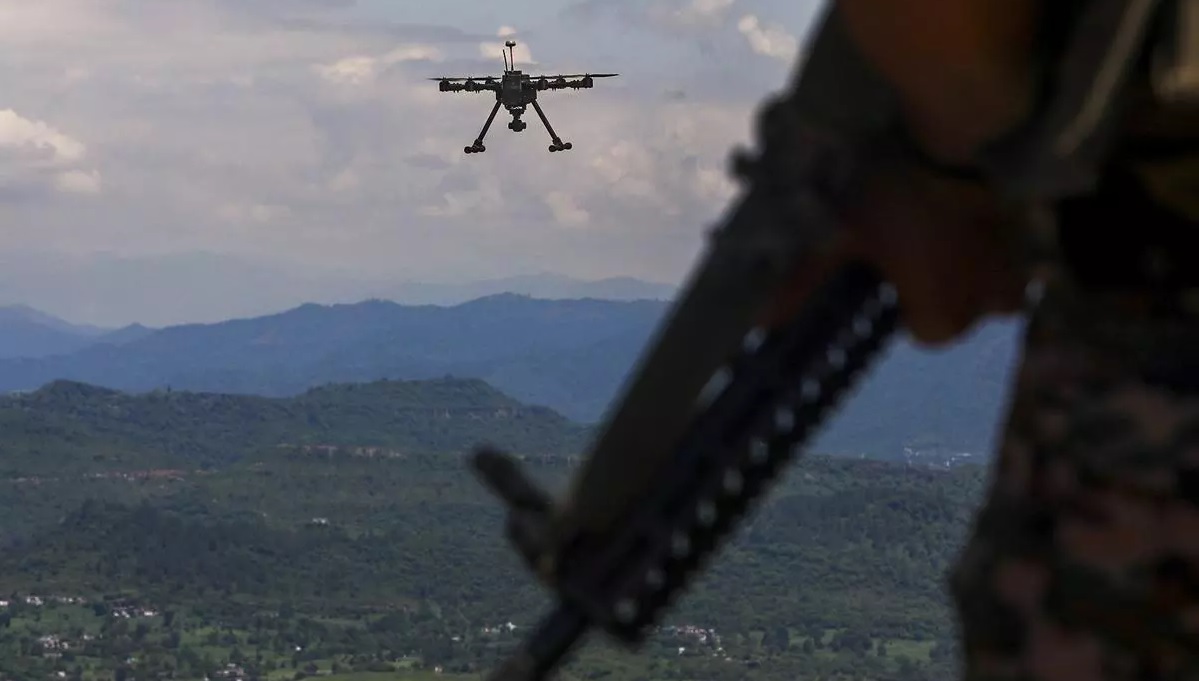 India's Defence Ministry Warns Against Chinese Parts in Military Drones Amid Security Concerns
India's Defence Ministry Warns Against Chinese Parts in Military Drones Amid Security Concerns
-
 Pakistan Announces 15% Increase in Defence Budget for 2024-25 Amid Economic Crisis
Pakistan Announces 15% Increase in Defence Budget for 2024-25 Amid Economic Crisis
-
 China’s Super Radar Detects Mysterious Plasma Bubble Over Giza Pyramids
China’s Super Radar Detects Mysterious Plasma Bubble Over Giza Pyramids
-
 India's Indigenous Kaveri Engine Program with New Focus on Thrust and Performance
India's Indigenous Kaveri Engine Program with New Focus on Thrust and Performance
-
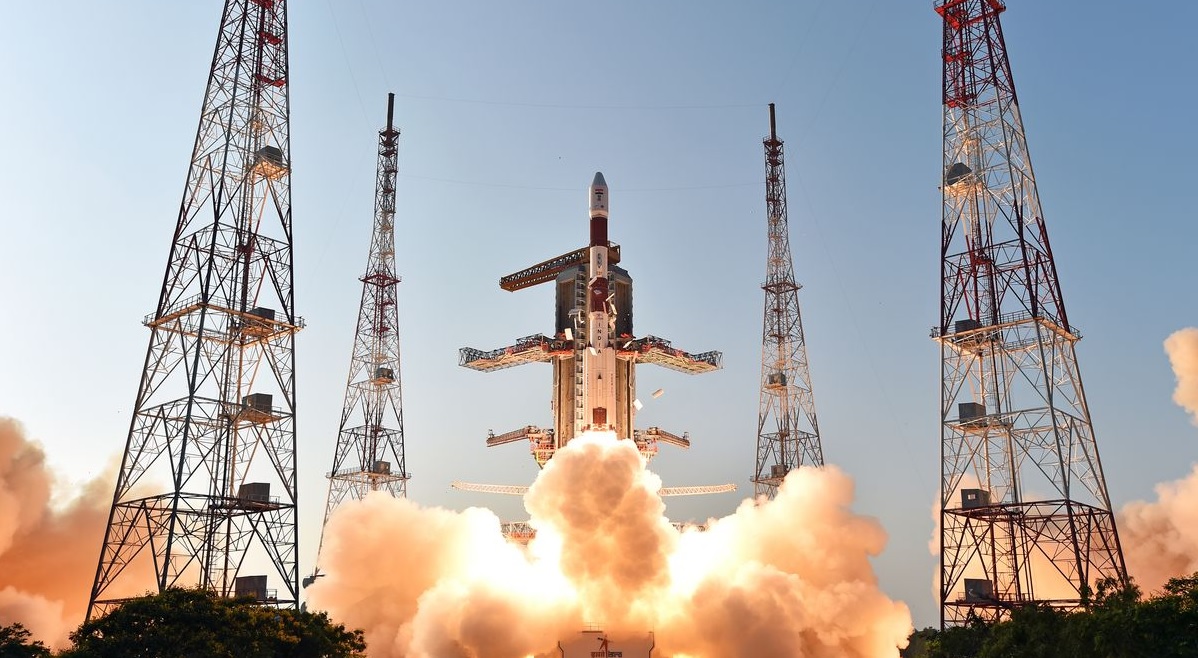 Isro Draws up Ambitious Plan for 2024, says will Launch at Least 12 Missions
Isro Draws up Ambitious Plan for 2024, says will Launch at Least 12 Missions
-
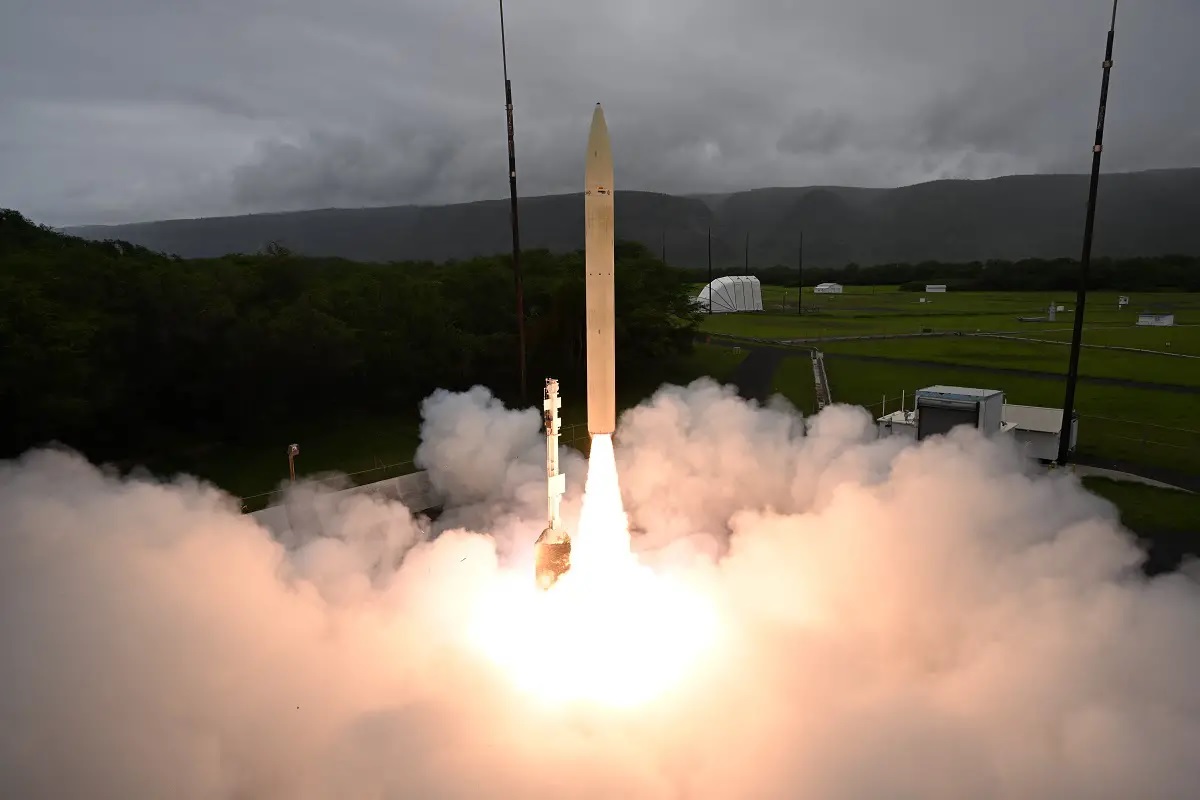 Successful Hypersonic Missile Test by U.S. Department of Defense
Successful Hypersonic Missile Test by U.S. Department of Defense
Top Trending in 4 Days
-
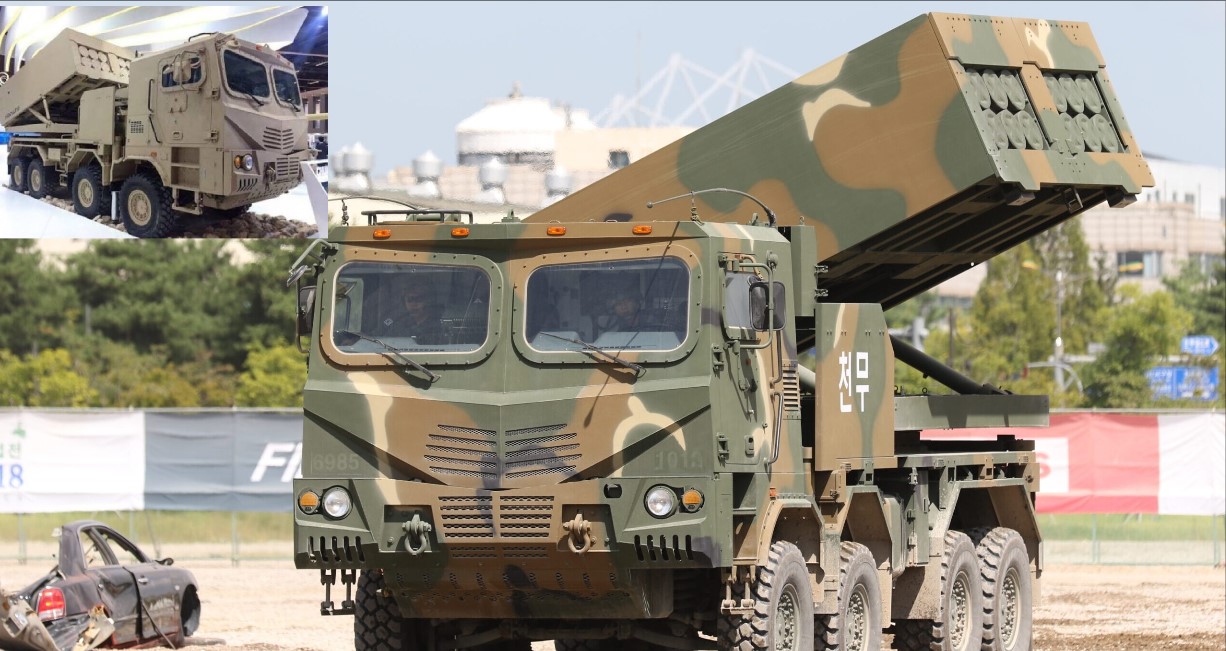 South Korea’s K239 Chunmoo Rocket Artillery Spotted in Saudi Arabia
South Korea’s K239 Chunmoo Rocket Artillery Spotted in Saudi Arabia
-
 Russia Launches Massive Missile and Drone Attacks on Ukraine's infrastructure
Russia Launches Massive Missile and Drone Attacks on Ukraine's infrastructure
-
 Peru to Acquire South Korea's K2 Black Panther Tanks
Peru to Acquire South Korea's K2 Black Panther Tanks
-
 Russia Reports Interception of 44 Ukrainian Drones Including 20 over Novgorod region
Russia Reports Interception of 44 Ukrainian Drones Including 20 over Novgorod region
-
 Advancing Space Tech for Defense: ICEYE Leads Finland's F-35 Industrial Participation Program
Advancing Space Tech for Defense: ICEYE Leads Finland's F-35 Industrial Participation Program
-
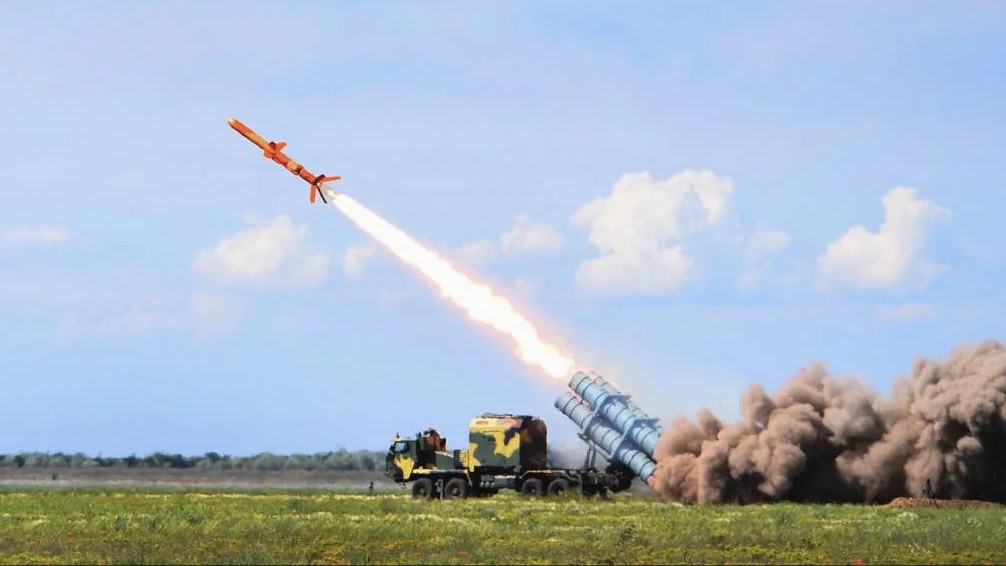 Ukraine Scales Up Neptune Missile Production: Over 100 Units Manufactured with Enhanced Range
Ukraine Scales Up Neptune Missile Production: Over 100 Units Manufactured with Enhanced Range
-
 Taiwan Strengthens Communication Resilience with LEO Satellites, Make War-Proof its communications networks
Taiwan Strengthens Communication Resilience with LEO Satellites, Make War-Proof its communications networks
-
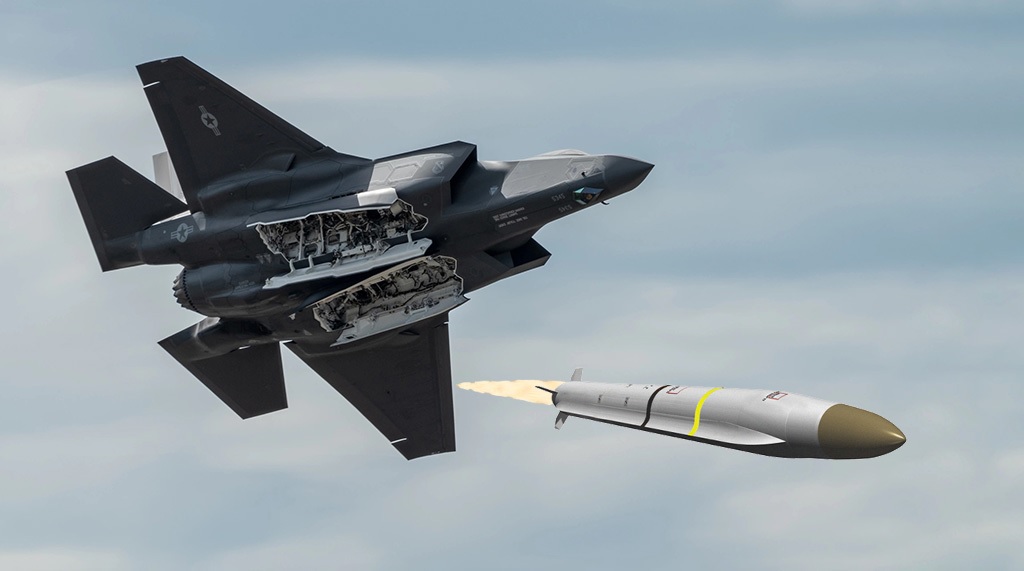 Northrop Grumman Delivers Advanced SiAW Missile for U.S. Air Force Testing
Northrop Grumman Delivers Advanced SiAW Missile for U.S. Air Force Testing



